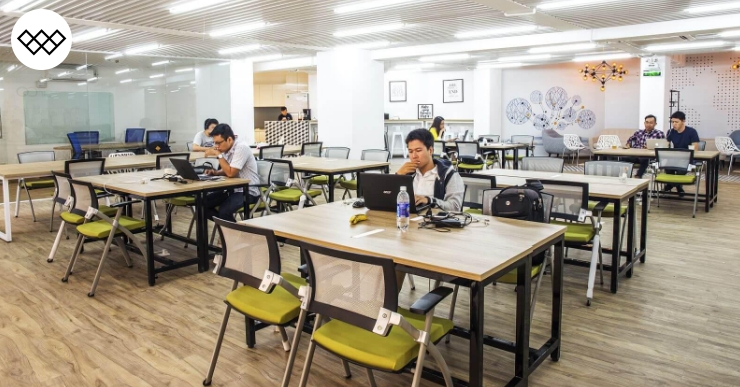
3 Steps To Control Employee Poaching At Coworking Spaces
It appears that ‘coworking’ is the future of India! Around 13 million people are expected to work out of coworking space by the end of 2020.
What’s making coworking spaces a hit with the workforce? It’s got a lot to do with the arrival of the ‘gig economy’! The rise of freelancers, part-time workers, entrepreneurs, start-ups, and contract-employees is the biggest reason coworking spaces are finding acceptance. These flexible spaces offer a plethora of benefits to employees from fully-equipped offices to agreeable rental arrangements. After all, when you are just stepping into the realm of business, renting by the hour or day can make a world of difference.
But, That’s Not All… Companies Are Now Realising the ‘Hidden’ Benefit of Coworking Spaces…
What’s now attracting even bigger companies to coworking spaces is the priceless networking opportunity. When individuals toil in a shared office space, it broadens the scope of meeting like-minded folks. Plus, they are embraced by a supportive and growth-focused community. This prospect of not just widening but improving connections makes the new age employees rush to these ‘new age offices’ like bees to honey.
However, this very benefit of coworking spaces can end up being a double-edged sword! Being part of a space full of diverse, ingenious, and driven people has its own risks.
Why, Sometimes, Coworking Spaces Could Cause Employee Poaching
Cost-effectiveness and divestment of managerial work are the magnets that pull organisations and start-ups alike to coworking spaces.
When you work under the same roof as the other company, you already have the answers. The reverse reasoning is also applicable. It’s far too easy for companies to gauge how well another employee works (given the common premises) and make a move on them. Chances are a manager, or department head showed interest in you because they are cognizant of your professional aptitude and capability.
When both sides of the table understand that the change necessitates minimal adjustments, they are quick to reach a decision. A more powerful company may steal an employee, or an innovative and agile worker will move to greener pastures. The end result is the same: your workforce is short one productive person.
It is important to point out here, that while poaching may ‘seem’ easier at a coworking space owing to the easy accessibility, the convenience pretty much ends there. Poaching is a problem that goes beyond space and even geography, and something even traditional offices need to face. Technology makes it all possible. Companies and employees enjoy unfettered access to each other via social networking platforms like LinkedIn, and that’s where the groundwork of poaching is laid.
Necessary Steps to Safeguard Against Employee Poaching
The foremost step to make sure your employees stay put, is to stop harping on the location, and pay attention to employee engagement. If your employees are sufficiently challenged and have what they need, they aren’t going to be looking elsewhere.
If you’ve got that figured out, then with a few simple measures, you can ensure that your employees don’t set their sights on the ‘greener pastures’ across the floor!
1. Create guidelines that deter switching
Thanks to the incredible scope for networking, It is easier for anybody to know about vacancies in the companies sharing the space. Not just that – employees in the coworking space get the first-mover’s advantage too, since they are literally ‘just around the corner’. For any company, this possibility might trigger doubts around retaining employees.
However, there are ways to safeguard against this issue. One way is to formulate policies that spell out secrecy guidelines regarding open positions or job opportunities. Also, there could be initiatives to promote a more ethical approach to circumvent a poaching situation.
2. Explicit privacy precepts
Coworking spaces are hotbeds for networking thanks to the open layout. However, there could be instances where employees might flout the rules, and take advantage of the lack of walls, leading to potential security issues, or poaching.
The measure here is to give your employees a distinct set of privacy rules. Explain to them what constitutes a topic of conversation for common areas and what should be spoken only in the restricted sections of the shared office.
3. Elect a shared space manager
Coworking spaces are a melting pot of diversity. From freelancers to start-ups, from fintechs to visual artists, you’ll find them all. While this is incredible for learning and innovation, it is possible that the openness might lead your employees to consider potential opportunities in the companies sharing space with you.
Think of a scenario where a specific occupant of the shared workspace is ‘interacting’ regularly with your employees. If there is a community manager at hand, they can intervene or even take action before the ‘interaction’ turns into employee poaching.
If you really think about it, ‘the perfect workplace’ doesn’t really exist. Coworking spaces come close to perfection, given that they encourage innovation, collaboration, and the idea of a workspace that doesn’t feel restricted. If you take the necessary precautions, you can enjoy the unique benefits that only coworking spaces offer, without worrying about losing your employees to rival companies. It’s all about retaining the discipline of a workspace and taking advantage of the lack of walls.




